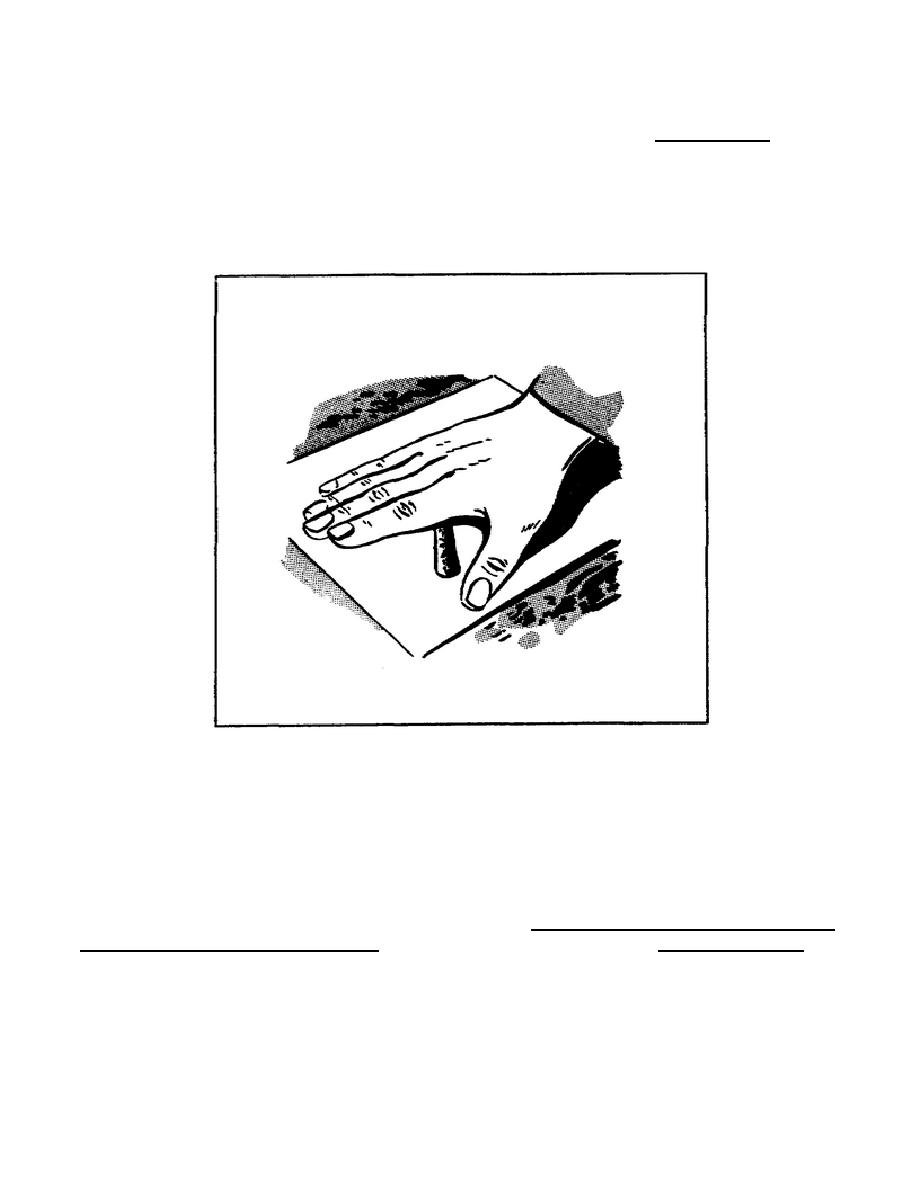
Lesson 1/Learning Event 3
The boundaries between the different states in which a soil may exist are called Atterberg limits after the
Swedish soil scientist who first defined them more than 40 years ago. The Atterberg limits have been
defined by Dr. Arthur Casagrande, using standard laboratory procedures, as follows:
Plastic Limit (PL): The moisture content of a soil which can be formed into a ball, then rolled to
a 1/8-inch thread only once before crumbling. This is the soil moisture content at the boundary between
the semi-solid and plastic states (Refer to Figure 10).
FIGURE 10. PERFORMING A PLASTIC LIMIT TEST
Liquid Limit (LL): The soil moisture content at the boundary between the plastic and the liquid
states. This boundary is defined as the water content at which two soil cakes placed in a standard cup
and divided into two sections by a grooving tool, will flow together for a distance of 0.5 inch along the
bottom of a groove when the cup is dropped 25 times for a distance of 1 cm at the rate of two (2) drops
per second.
Having available the empirical tests of Dr. Albert Atterberg, which enable the determination of the
plastic limit and liquid limit, it is possible to determine the magnitude of the moisture content range
through which a soil is in the plastic state. This range of moisture content is the Plasticity Index (PI):
Plasticity Index
= Liquid Limit
-
Plastic Limit
PI
=
LL
-
PL
16


 Previous Page
Previous Page
